SLVAE27A December 2018 – November 2021 TPD1E01B04-Q1 , TPD1E05U06-Q1 , TPD1E10B06-Q1 , TPD1E10B09-Q1 , TPD2E001-Q1 , TPD4E001-Q1 , TPD4E02B04-Q1 , TPD4E05U06-Q1
TI Tech Note
Recently there has been an increase in demand for connectivity in vehicles. Most infotainment systems today are composed of a head unit and media interface system.
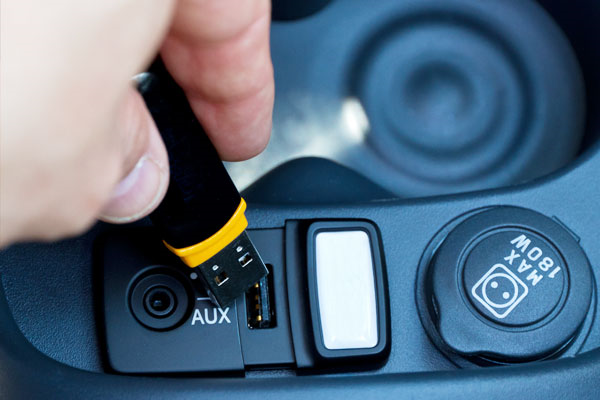
Media interface refers to the system that connects external or internal media (from a cellphone, media player, and so forth) to the vehicles infotainment system, while head unit refers to the hardware interface of an automotive infotainment system.
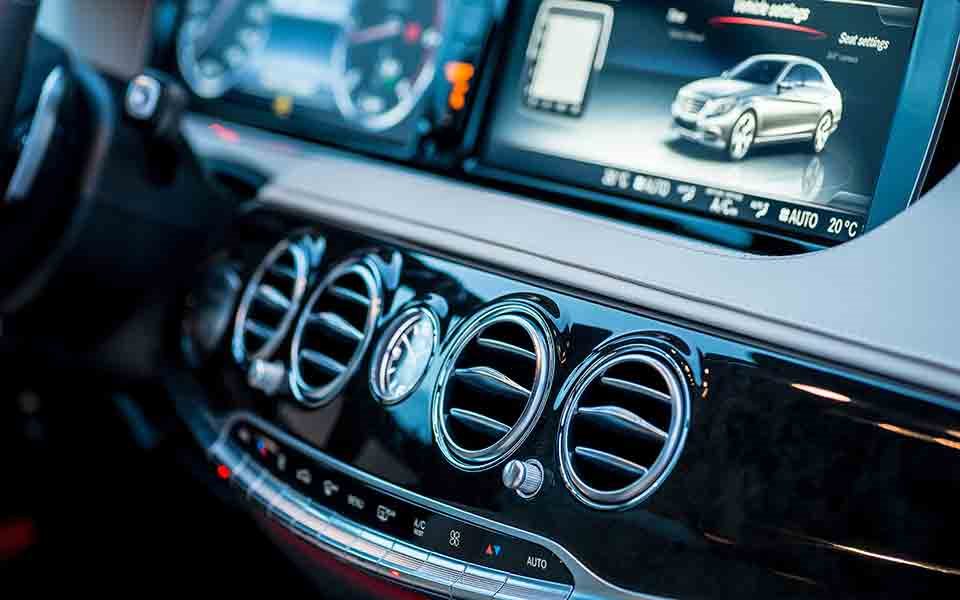
The media interface can receive inputs from USB, HDMI, SD Cards, or Audio Jacks. The most common found in vehicles today are USB, as Audio Jacks are experiencing a decline in use.
These interfaces cause the internal system circuitry to be at risk of electrostatic discharge (ESD) strikes. During an ESD strike thousands of volts are being discharged which can cause harm to internal components.
To simulate real world ESD even in vehicles the ISO 10605 is used. To simulate a discharge directly from a human body the ISO 10605 uses a 2-kΩ resistor, but to simulate a human body discharging through a metal object a 330-Ω resistor is used. A 150-pF capacitor is used to simulate a person outside the vehicle and a 330-pF capacitor is used to simulate a person inside of the vehicle. The following graph shows the contact discharge waveforms of a person outside and inside of a vehicle discharging through a metal object.

Universal Serial Bus (USB)
A Universal Serial Bus (USB) is an interface used to connect a variety of electronic devices together. Within the automotive industry USB is typically used to connect the occupants’ mobile devices to the infotainment system in the vehicle. As of late there has been an increase in USB 2.0 and USB 3.0 ports in vehicles.
Four pins make up the USB 2.0 connector: VBUS, D+, D–, and ground. The VBUS line and the data lines will require ESD protection. The output voltage on a USB connector is ≤ 5 V, so the working voltage of an ESD protection device should be 5 V for the VBUS line. USB 2.0 has a data speed of 480Mbps so the ESD protection device for the data lines should have a low capacitance.
In addition to the four pins that a USB 2.0 connector has, USB 3.0 has an additional five pins. The five additional pins are two super-speed transmitter differential pairs and a ground for signal return. USB 3.0 has a data speed of 5Gbps so a low capacitance is necessary to maintain signal integrity.
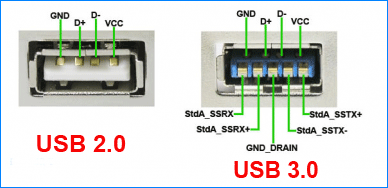
TI offers several protection devices for USB 2.0 and USB 3.0 such as the TPD1E05U06-Q1, TPD4E05U06-Q1, TPD1E01B04-Q1, and the TPD4E02B04-Q1.
High-Definition Multimedia Interface (HDMI)
A High-Definition Multimedia Interface connector transmits audio and video data. Within the automotive industry HDMI is typically used in rear-seat entertainment systems, or used internally to transmit data back to the head unit from the media hub. An HDMI connector has nineteen pins.
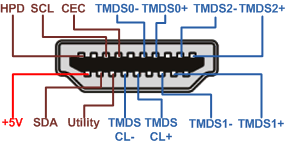
For the non-TMDS channels ESD protection is needed but capacitance is not a concern due to the passing of low speed data. The TMDS lines can transmit data at ≤ 18Gbps for HDMI 2.0 at an operating voltage of 3.6 so a device with low capacitance is desired. The TPD1E05U06-Q1, TPD4E05U06-Q1, TPD1E01B04-Q1, and the TPD4E02B04-Q1 are also options for protecting HDMI connections.
Display SerDes
Automotive display or camera systems typically require serializers and deserializers (SerDes) for data transmission. When the cabling is connected to these external connectors, the built-up charge on the cables can possibly cause a high-voltage ESD strike. Depending on the presence of a DC bias across the cabling, such as power over coax (PoC), the location of the diode will either need to be either on the connector side of the AC coupling capacitor if there is a bias or the IC side of the capacitor if there is no bias. To protect these high speed SerDes bus pins, low capacitance diodes like TPD1E01B04-Q1 or TPD4E02B04-Q1 should be used.
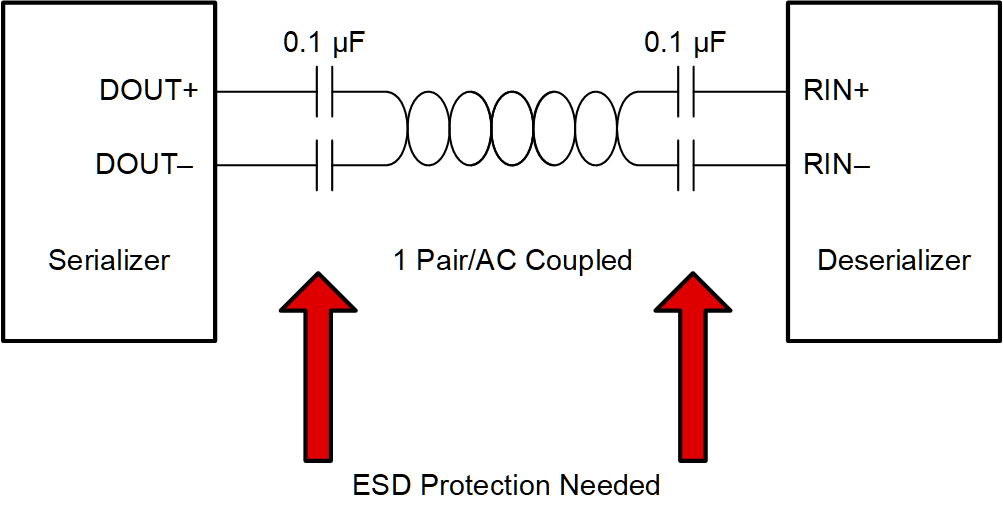
Other Interfaces
A number of other interfaces exist in an automotive infotainment system that also require ESD protection such as audio jack, SD card, push-button. The main considerations in selecting protection for these systems include voltage level of the interface, max data rate to know the ESD diode capacitance that can be tolerated, and ESD ratings. A device that works well for general purpose protection where data rate is not a key concern is the TPD1E10B06-Q1, which exists in the 0402 package, as well as the SOD-523 package.
| Device | Channels, VRWM, Cap | Interface |
|---|---|---|
| TPD1E01B04-Q1 | 1, ±3.6 V, 0.20 pF | Ethernet, HDMI 1.3/1.4, HDMI 2.0, SerDes, LVDS, USB 2.0, USB 3.0 |
| TPD1E05U06-Q1 | 1, +5.5 V, 0.5 pF | Ethernet, HDMI 1.3/1.4, HDMI 2.0, LVDS, USB 2.0, USB 3.0 |
| TPD1E10B06-Q1 | 1, ±5.5 V 10 pF | Audio, General Purpose |
| TPD1E10B09-Q1 | 1, ±9 V 12 pF | Audio, General Purpose |
| TPD2E001-Q1 | 2, +5.5 V, 1.5 pF | Ethernet, General Purpose, LVDS, Memory/SIM Care, USB 2.0 |
| TPD2E2U06-Q1 | 2, +5.5 V, 1.5 pF | Ethernet, General Purpose, LVDS, Memory/SIM Care, USB 2.0 |
| TPD4E001-Q1 | 4, +5.5 V, 1.5 pF | Ethernet, General Purpose, LVDS, Memory/SIM Care, USB 2.0 |
| TPD4E05U06-Q1 | 4, +5.5 V, 0.5 pF | Ethernet, HDMI 1.3/1.4, HDMI 2.0, LVDS, USB 2.0, USB 3.0 |
| TPD4E02B04-Q1 | 4, ±3.6 V, 0.25 pF | Ethernet, HDMI 1.3/1.4, HDMI 2.0, SerDes, LVDS, USB 2.0, USB 3.0 |